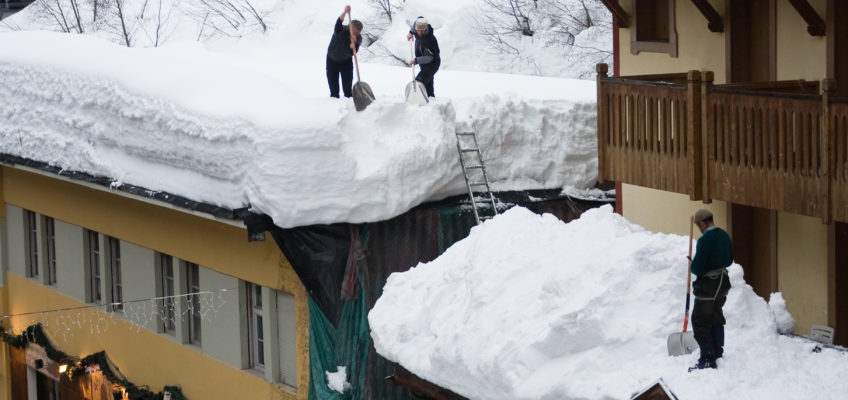What causes ice damming on residential roofs?
Forming at the bottom of your roof, ice dams are a nightmare to deal with during the cold month. While these may seem harmless, icicles allow water to penetrate through your walls and roofs. In turn, you may have to deal with loose shingles, wear and tear of your gutters, and seepage.
To ensure ice damming doesn’t damage your roof and walls, you must understand what causes it. Read on to find out what ice dams are and how you can prevent their formation atop your roof:
What is an Ice Dam?
An ice dam refers to big chunks of ice that start forming at the bottom of your roof to ensure snow doesn’t fall off of the roof. Unfortunately, here water starts accumulating behind the ice dam that starts leaking inside the house.
Ultimately, your walls, ceilings, roof, insulation, and similar areas are subject to destruction.
What Causes Ice Dams?
While these are easy to spot due to large obvious ridges present around the edge of your roof, the causes aren’t always straightforward. Here are a couple of reasons your house may have ice dams:
- Older buildings often come with low-quality insulations, particularly in areas where the roof and walls connect. Typically, heat transfers via these exterior frames to help warm the deck and effectively melt snow. Unfortunately, this heat moves downwards where heated air doesn’t reach, and the water freezes again.
- A large amount of heat warms the attic due to leakage through the walls.
- If your ventilation equipment like furnaces, duct-work, HVAC, and so on are present in the attic, chances are, it’s causing excessive heating of the deck.
- While pot lights don’t create a lot of heat, they are pretty challenging to seal. Thus, they allow high quantities of air leakage.
- Snow boasts an R-value of either 1 or 2. So, a substantial amount of snow accumulating atop your roof leads to increased insulation of your attic. The snow here starts melting down towards the roof’s edge, where it absorbs water to form ice dams.
- A combination of sun and wind leads to the formation of ice dams due to the sun melting only the surrounding snow.
How to Prevent Ice Damming on Roofs?
Moisture may enter your house via ice dams. It can lead to the excessive growth of bacteria or mold that causes severe respiratory issues. Prevent that from occurring by obstructing the growth of ice dams:
- Utilize a roof rake to safely pull snow off of your rooftop while staying on the ground.
- Installing roofs boasting high pitch and sufficient overhang ensures proper ventilation and insulation. It reduces the chances of thermal bridging.
- Apply a bottom metal layer to ensure snow smoothly slides off your roof.
- A DIY solution to this problem is putting ice melt in a pair of pantyhose and allowing it to create an incredible channel for the flow of water.
- Hiring an expert weathering professional helps avoid the problem of ice damming completely.

